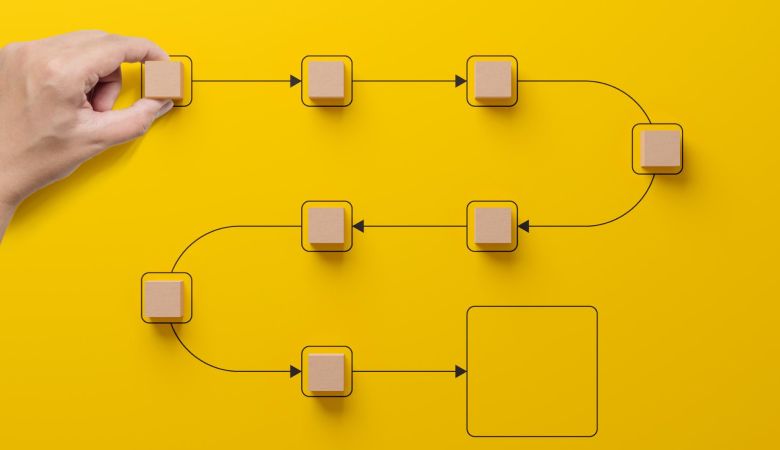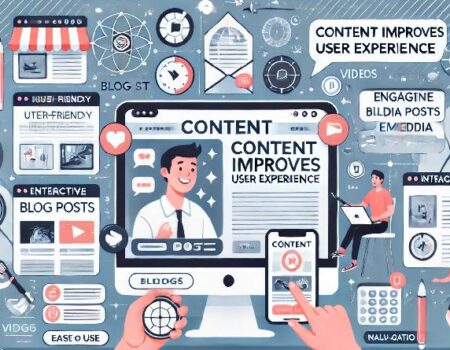A Guide to Making Truly Effective Customer Journey Maps!
Did you know that in 2024, nearly 70% of online shoppers abandoned their carts? It’s a familiar scenario—shoppers add products to their carts, only to get distracted and never complete the purchase.
Understanding why this happens starts with analyzing customer behavior. One of the most effective tools for this is customer journey mapping.
While it may not predict every action a customer takes, customer journey mapping helps identify the key stages and touchpoints in their experience. This guide explores the essentials of customer journey mapping—what it involves, how to create an effective map, and best practices to ensure it supports business goals and improves the overall customer experience.
Understanding the Customer Journey
The customer journey describes the complete sequence of interactions a person has with a brand or product, beginning from the moment they recognize a need or problem and continuing through to the point of purchase. Unlike the buyer’s journey, which outlines the typical steps someone takes before purchasing, the customer journey focuses on how an individual experiences those steps with a particular business or service.
Customer Journey vs. Buyer Journey
Many businesses struggle to distinguish between the customer and buyer journeys, although both play vital roles in shaping successful marketing and sales strategies.
The buyer journey refers to the complete decision-making process an individual undergoes — from the initial awareness of a product or service to the final purchase decision. This journey typically includes key stages such as awareness, consideration, and decision. Buyers rarely make instant purchases; instead, they progress through these stages before taking action.
In contrast, the customer journey focuses on how a brand interacts with potential buyers throughout that process. It involves mapping specific touchpoints where engagement occurs — ensuring that each interaction aligns with the customer’s expectations and needs. By clearly defining these touchpoints, businesses can create a seamless and strategic experience that supports the buyer at every step.
For instance, many organizations structure their customer journey around pre-purchase, onboarding, and post-purchase engagement or renewal stages. This approach helps maintain consistent, valuable interactions beyond the initial sale.
Understanding Customer Journey Mapping!
A customer journey map is a visual tool that outlines the end-to-end experience a customer has while interacting with a brand. It highlights the various touchpoints and sheds light on the needs, motivations, and potential roadblocks customers may face at each stage of their journey.
By creating this map, businesses gain the clarity needed to optimize customer interactions, streamline conversion paths, and enhance overall satisfaction and retention.
It’s important to note that customer journey mapping differs from UX journey mapping, although the two can occasionally overlap.
What Is UX Journey Mapping?
UX journey mapping focuses on the user’s steps toward achieving a specific objective or completing an action. While it can align with the customer journey — such as the path to making a purchase — UX mapping applies to other goals like navigating product features or using a service function.
The key distinction lies in scope: customer journey mapping covers the broader relationship with the brand, while UX mapping hones in on individual user experiences.
Why Customer Journey Mapping Matters
The path to purchase is rarely linear. Before customers recognize a solution, they must first become aware of the problem — and that process often involves multiple layers of education, exposure, and comparison.
Customers may engage with online reviews, advertisements, demos, or conversations with sales teams throughout their journey. Each interaction influences their perception of the brand.
Research shows that 80% of consumers value their experience with a company as much as the product itself. This insight underscores the importance of delivering thoughtful, seamless engagement.
By mapping the customer journey, marketing, sales, and support teams can better understand how to reduce friction, respond to needs more efficiently, and build stronger brand loyalty — all of which drive long-term success.
Essential Data Sources for Effective Customer Journey Mapping
To build an accurate and insightful customer journey map, businesses must rely on real, actionable data rather than assumptions. This data typically falls into two main categories: solicited data — which is gathered through direct customer feedback — and unsolicited data, which reflects actual user behavior without prompting.
As customer journey strategist Lindsay Hope emphasizes, the goal is to uncover meaningful insights that reveal how customers truly think, feel, and act at different stages. Relying on assumptions often leads to flawed strategies, while fact-based data offers a clearer, more dependable path.
Solicited Data: Direct Customer Feedback
Surveys and interviews are valuable tools for collecting direct insights into customer experiences and challenges. These methods, considered solicited data, allow businesses to ask focused questions and collect specific feedback.
Examples of valid solicited data include:
- Post-purchase surveys to understand customer satisfaction and pain points.
- One-on-one interviews to explore deeper motivations behind purchasing decisions.
- Feedback from non-buyers to identify why they chose not to complete the transaction.
Standard tools such as Net Promoter Score (NPS), Customer Satisfaction (CSAT) surveys, and social media polls can help capture honest perspectives about how customers perceive their interactions.
However, it’s essential to recognize the limitations of solicited feedback. The conversation context may influence responses and only reflect a single moment, not the entire journey.
Pro Tip: Ask questions that uncover customer emotions and points of friction. Instead of asking, “Which features did you like?” consider asking, “What made you confident this was the right solution?”
Unsolicited Data: Behavioral Insights
Unsolicited data consists of behavioral metrics that customers provide indirectly — often through their digital interactions. This data provides a more objective view of how people engage with a business.
Key examples of unsolicited data include:
- Website analytics: page visits, click paths, bounce rates, and cart abandonment statistics.
- Email engagement: open rates, click-through rates, and conversion behaviors
- Social media activity: public mentions, reviews, and shared experiences that reflect customer sentiment.
- Operational data: internal metrics like shipping delays or customer support ticket times that impact the overall experience.
For instance, if analytics reveal that many customers abandon their carts during checkout, deeper investigation may highlight issues like slow-loading pages or limited payment options.
Why Both Solicited and Unsolicited Data Matter in Journey Mapping
Relying solely on one data type offers a limited view of the customer experience. While unsolicited data is typically easier to collect in volume, it often lacks the depth and context that direct feedback (solicited data) provides. However, when combined, both types create a well-rounded and insightful picture of the customer journey — helping businesses identify blind spots and areas for improvement.
One of the most valuable outcomes of this combination is uncovering the “voice of the customer” — the specific words, phrases, and expressions customers naturally use. This insight can be compelling when crafting messages that truly resonate with the target audience.
Ivan Venberg, Head of Content at Yango Ads, emphasizes the importance of understanding customer language. He refers to Sarah Winters’ insights in Content Design, where a shift from using the word “fracturing” to “fracking” — based on actual user language — led to significantly better engagement on a government website. The key takeaway: speak in the customer’s terms, not your own.
Combining both data types can also reveal hidden friction points. For instance:
- Potential customers might provide positive feedback in surveys yet abandon purchases after seeing unexpected shipping costs.
- Although support team ratings may be high, chat transcripts could reveal delays or frustration customers didn’t explicitly mention in reviews.
These insights show that positive ratings don’t always mean a seamless experience — and that behind-the-scenes behaviors often tell a deeper story.
How to Build a Customer Journey Map That Works
Creating a customer journey map isn’t just about plotting steps on a chart — it’s about truly understanding how customers think, feel, and act throughout their experience with a brand. That means moving beyond assumptions and gathering meaningful insights that reflect real behavior and pain points.
Here’s how businesses can build a journey map that leads to better strategy and stronger connections with their audience.
Start with Clear Intentions
Every effective journey map begins with a purpose. Whether the goal is to improve onboarding, identify friction in the sales funnel, or strengthen post-purchase engagement, being specific from the start shapes the rest of the process. It’s also crucial to know who the journey is being mapped for — aligning it with a defined customer persona ensures the insights stay targeted and actionable.
Build Out Detailed Customer Personas
A customer persona is a fictional profile based on real-world data — including demographics, behaviors, goals, and challenges. Building one helps teams empathize with the audience and keep the journey map grounded in customer reality. Research tools like surveys, interviews, and journey analytics can bring these personas to life. The focus should be on what users do and why they do it.
Questions worth exploring include:
- How did the customer discover the business?
- What problems are they trying to solve?
- What made them trust the brand (or not)?
- What influenced their final decision?
Map Out Every Customer Touchpoint
Touchpoints are customers’ interactions with a brand — across web pages, ads, emails, customer support, and beyond. Listing these out creates a visual trail of the customer’s journey. It also makes it easier to spot gaps, friction points, or opportunities where the brand could show up more helpful. The more touchpoints considered, the more accurate the map becomes.
Assess Available Resources — and What’s Missing
Once the path is clear, evaluating what internal tools, platforms, and teams are available to support each step is time. This includes understanding where automation is possible, where human intervention is needed, and what might be holding the process back. Identifying resource gaps helps prioritize improvements and investments.
Experience the Journey Firsthand
Businesses should try walking the path themselves to really understand what customers are going through. Going through each interaction step-by-step—from discovery to purchase to follow-up—reveals pain points that might not be visible from behind the scenes. This process often highlights design flaws, confusing navigation, or service delays that affect the overall experience.
Review the Data and Analyze Patterns
With the map built and feedback gathered, the next step is digging into the data. Look at qualitative and quantitative signals — from customer interviews and feedback forms to website analytics and support logs. This analysis helps verify where users thrive and where they drop off or express frustration.
Keep the Journey Map Updated
A customer journey map isn’t a one-and-done task. It should be updated regularly as customer behaviors evolve and business strategies shift. Ongoing reviews allow teams to stay aligned with customer expectations and adapt to changes in real-time—whether that’s due to product updates, seasonal trends, or shifts in market demand.
Pro Insight: Ask the Right Questions
As Lori Highby of Keystone Click suggests, asking consistent questions at each journey stage creates a fuller picture. These might include:
- What is the customer thinking or feeling?
- What actions are they taking at this point?
- Where do they interact with the brand?
- What’s causing hesitation?
- How can the brand add more value?
Repeating these questions across awareness, consideration, action, experience, and advocacy helps highlight patterns and pin down opportunities for improvement.
Key Elements Every Customer Journey Map Should Include
A customer journey map is more than just a visual timeline—it’s a strategic tool that captures how customers interact with a brand across different stages. It’s essential to include the right elements to build one that delivers real insight. Each component plays a role in understanding the customer’s experience, behavior, and expectations.
Below are the essential components that make up an effective customer journey map:
1. Buying Stages
The foundation of any customer journey map is outlining the stages a customer goes through—from discovering the brand to making a purchase decision. These phases are typically grouped into three major categories: awareness, consideration, and decision.
To understand how users transition between these stages, businesses can analyze:
- Website traffic and navigation paths
- Social media engagement patterns
- Interactions with customer service
- Purchase behavior and conversion data
- Feedback from surveys or forms
Mapping this process provides a high-level view of how buyers progress and where they may face challenges.
2. Emotional Landscape
Customer behavior is often driven by emotion. Whether it’s excitement, confusion, trust, or frustration, emotions influence decisions and can indicate moments of friction or delight. Incorporating emotional checkpoints in the journey map helps brands empathize and respond accordingly.
Sentiment can be identified using:
- Net Promoter Score (NPS) responses
- Online reviews and testimonials
- Comments and mentions on social platforms
- Insights from support conversations
- Feedback from focus groups or interviews
Some businesses even visualize this with emojis or emotional markers to simplify team interpretation.
3. Customer Actions
Understanding what customers do at each step clarifies how they’re engaging with the brand. Actions like downloading content, subscribing to newsletters, or clicking on calls-to-action provide clues about interest and intent.
Key behavior metrics to examine include:
- Page visits and dwell time
- Click-through rates on emails or ads
- Form submissions or registrations
- Content downloads (e.g., guides, whitepapers)
- Event or webinar participation
Tracking these movements reveals where users are actively engaging—and where drop-offs might occur.
Partner with our Digital Marketing Agency
Ask Engage Coders to create a comprehensive and inclusive digital marketing plan that takes your business to new heights.
4. Research Behavior
Potential buyers often conduct their own research before making a decision. Recognizing where and how this happens allows businesses to position themselves as trusted sources of information during critical early stages.
Data sources to analyze include:
- Keywords and search queries
- Questions submitted via chatbots
- Comments or threads on social media
- Reviews or comparisons on third-party platforms
- Observations from competitive analysis
This element of the journey map helps ensure that brand content and messaging are available where customers are actively looking for answers.
5. Strategic Solutions
Once the journey has been broken down and patterns are identified, the final step involves identifying actionable solutions. This means finding ways to reduce friction, improve usability, and create a smoother, more satisfying experience for the customer.
Businesses can leverage tools such as:
- Customer experience platforms and feedback tools
- Web behavior tracking and heatmaps
- Conversational AI or automated support options
- Journey optimization platforms
- CRM data integrations
Ultimately, this component is where teams take insight and turn it into strategy—closing the loop between understanding and action.









